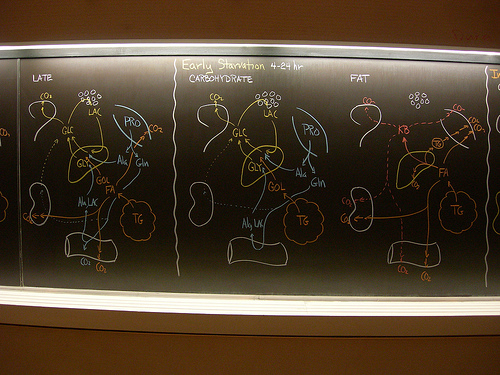Metabolism Explained

In this article I’m gonna go over exactly how our metabolism works. Every time we eat, nutrients we consume become the building blocks and fuel needed by our body. Your body gets the energy it needs from food through a process called metabolism.
Metabolism is a collection of chemical reactions that takes place in the body’s cells. Metabolism converts the fuel in the food we eat into energy needed to power everything we do, from moving to thinking to growing. Specific proteins in the body control the chemical reactions of metabolism, and each chemical reaction is coordinated with other body functions. Many metabolic reactions happen at the same time — all regulated by the body and keeping our cells healthy and working.
How Metabolism Works
I am going to explain it, in a more scientific way, so you can get the picture. When we consume food or drinks we take in this energy (in the form of sugar), along with other vital cell-building chemicals. The body’s next step is to break the sugar down so that the energy released can be distributed to, and used as fuel by the body’s cells.
After the consumption , molecules in the digestive system called enzymes break proteins down into amino acids, fats into fatty acids, and carbohydrates into simple sugars ( glucose). In addition to sugar, both amino acids and fatty acids can be used as energy sources by the body when needed. These compounds are absorbed into the blood, which transports them to the cells. After they enter the cells, other enzymes act to speed up or regulate the chemical reactions involved with “metabolizing” these compounds. During these processes, the energy from these compounds can be released for use by the body or stored in body tissues, especially the liver, muscles, and body fat.
Metabolism is a balance that breaks down into two, the building up of body tissues and energy stores ( Anabolism ) and the breaking down ( Catabolism ) of body tissues and energy stores to generate more fuel for body functions:
Anabolism or constructive metabolism, is all about building and storing: It supports the growth of new cells, the maintenance of body tissues, and the storage of energy for use in the future. Anabolism, small molecules are transformed into larger, more complex molecules of carbohydrates, protein, and fat.
Catabolism the destructive metabolism, is the process that produces the energy required for all activity in the cells. In this process, cells break down large molecules (mostly carbohydrates and fats) to release energy. This energy release provides fuel for anabolism, heats the body, and enables the muscles to contract and the body to move. As complex chemical units are broken down into more simple substances, the waste products released in the process of catabolism are removed from the body through the skin, kidneys, lungs, and intestines.
For example, after eating a meal, usually more anabolic activity occurs because eating increases the level of glucose — the body’s most important fuel — in the blood. The pancreas senses this increased level of glucose and releases the hormone insulin, which signals cells to increase their anabolic activities ( breaking down ).
Metabolism is very complicated chemical process, but many individuals think of is as something simple form in a way of how easily our bodies gain or lose weight. That’s where calories come in. A calorie is a unit that measures how much energy a particular food provides to the body.
The number of calories a person burns in a day is affected by how much that person exercises, the amount of fat and muscle in their body, and the person’s basal metabolic rate.
The basal metabolic rate, or BMR, is a measure of the rate at which a person’s body “burns” energy, in the form of calories, while at rest. The BMR can play a role in a person’s tendency to gain weight. For example, a person with a low BMR who burns fewer calories while at rest or sleeping will tend to gain more pounds of body fat over time, compared with a similar-sized person with an average BMR who eats the same amount of food and gets the same amount of exercise.
What factors influence a person’s BMR? To a certain extent, a person’s basal metabolic rate is inherited — passed on through the genes the person gets from his or her parents. Sometimes health problems can affect a person’s BMR .
But people can actually change their BMR in certain ways. For example, if you exercise more not only will you burn more calories directly from the extra activity itself, but becoming more physically fit will increase BMR as well. BMR is also influenced by body composition — people with more muscle and less fat generally have higher BMR’s.
Environment can also play a huge role on your metabolism, in the colder climate your body’s metabolism will increase to keep you warm, and in the hot climate it slows down.
There you have it, I know it was a lot to read, but it very important to understand how metabolism actually works.







